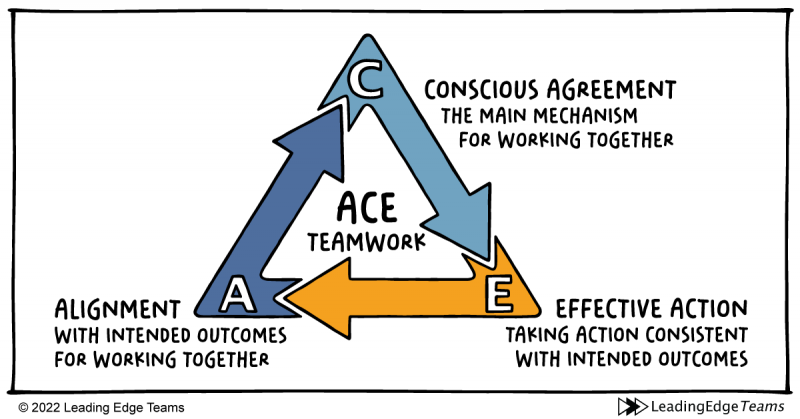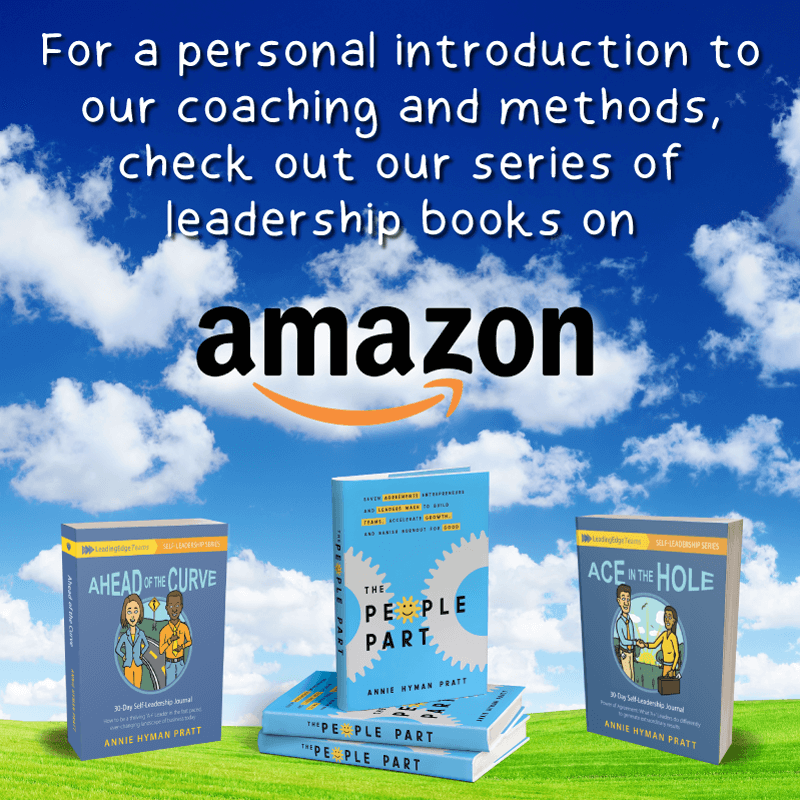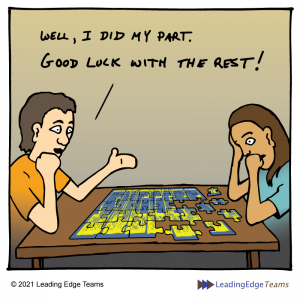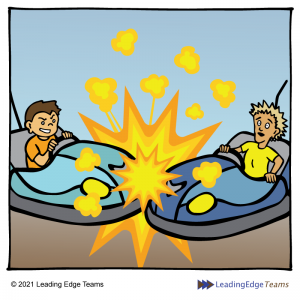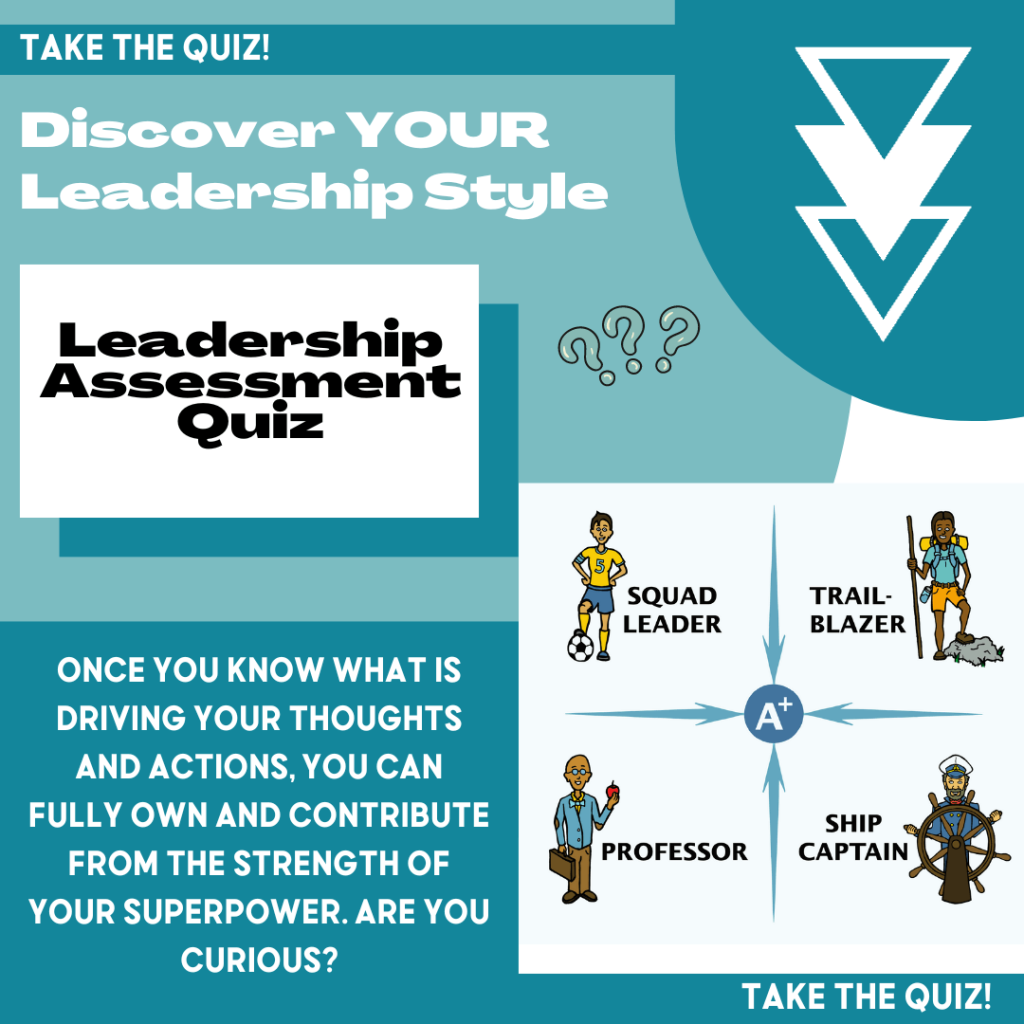When I ask leaders and their teams about their main obstacles to performance and what prevents them from achieving results, the number one answer—by far—is “Not having clear goals.” They say things like: “I don’t really know what we’re doing,” or “I don’t understand the bigger picture here,” or “We keep changing our plans, and I’m confused about what we’re really going for now.” How do you define company goals?
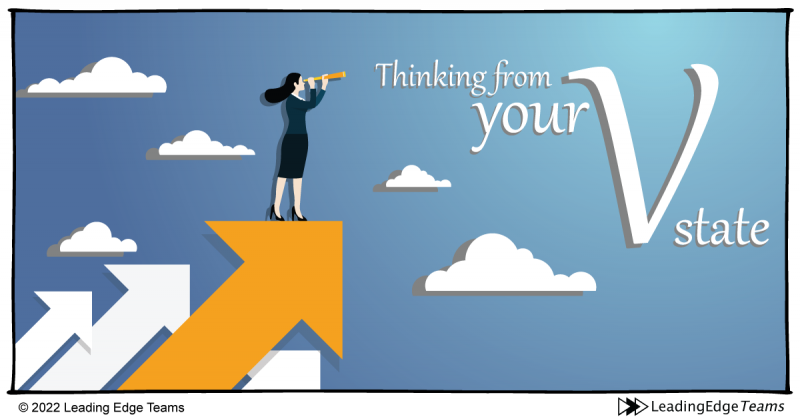
Define Clear Goals
My CEO clients are routinely shocked when I share this with them, saying things like “What do you mean, they don’t understand the goals? I talk about them every week! Plus I just explained them in depth at our all-hands meeting a month ago! And what about all the strategic planning we did? My entire leadership team attended those sessions and said they loved the vision and goals!” I remember my leaders saying the same thing to me at Coffee Bean, and thinking to myself, What the heck more could I tell them? I’ve given sales goals, and new store counts, and customer satisfaction targets—what else could they possibly need?
I was perplexed about this for years until I realized that when team members said, “I don’t really understand the goals,” what they usually meant was, “I don’t know how to achieve the goals, nor do I know the plan to make them happen,” or “I don’t really understand my part and how it will contribute to the goals,” or “I don’t believe I can achieve those goals, but I don’t know how to say so.” No one wants to commit to outcomes when they can’t see a reasonably clear path to achieve them. As soon as we focused the leaders and team on creating the strategy and plans to achieve the results, the confusion and uncertainty disappeared, which then made alignment and agreement easy.
But how do we form those original goals in a way that everyone can understand them and have confidence in achieving them? How do we form goals that the team commits to achieving, and then does? And what about when the goals change?
The Visionary Master Plan
Our process produces what we call your “Visionary Master Plan,” and after Self-Leadership, it’s the most important element that enables teams to achieve desired results. In the Visionary Master Plan, you’ll learn how to define company goals along with the “big why” behind them so that everyone knows what success looks like. You’ll also need to identify the strategic and internal projects that create the path to get you there.
But before we dive into that, we need to temporarily back up and discuss how business happens in the “real world” today. The old ways of working, where unusually smart, driven people gave orders from the top and everyone else did what they were told, are completely obsolete. The modern business environment changes faster and faster—technology innovates at blazing speeds, customers demand better quality for fewer dollars, and competitors pop up everywhere. So how do we grow a business amid such rapid change?
You have likely heard people talk about going from point A to point B. To describe the process of business growth today, I use a model that, instead, charts the journey from point A to point V. Point A in this model represents your current state, and point V represents your Vision State—the state you want to get to, where your vision for your business is made manifest.
The “V” State
You’re probably now wondering, But what does “vision” really mean in this context? Well, this V State is a set of high-level goals that you can describe in relatively concrete terms, as if you’re standing three or four years in the future and have actually achieved those goals.
And this V State doesn’t just describe the business results you are aiming for—it also includes the level of operating excellence needed to achieve them. I’ve found that most small-business owners don’t give the quality of their operations much thought. They think that if they just focus on achieving results, then good performance will happen naturally. But as with any activity in which you want to reach a mastery level, your company will hit a plateau if you don’t take deliberate measures to improve. So when you are planning your future V State and defining the outcomes you want to reach, you also need to think about how you and your team will operate to achieve those outcomes. When you have successfully reached the V State, what level of professionalism, teamwork, communication, structure, and processes will you have in place that have propelled you to reach that point?
Thinking from your V State is a simple concept, yet it’s a major empowering mindset shift. Picture yourself in the future, already having achieved your goals, and then imagine what your work and the work of your team members will look like.
- What kinds of things will you be doing differently from the way you operate now?
- For example, if your team currently plans everything at the last minute, how will that work when the revenue doubles?
- If you make all the important decisions yourself and haven’t yet developed your team to take on more responsibility, how will you focus more on strategy and innovation?
- And if your customer service team currently has to enter the same information into three different software systems, how will that work when your volume triples?
Your Current ‘A' State
When you think about these things from your current A State, you may realize that things are getting difficult and that you need some extra resources, or more planning time, but you aren’t thinking of what will be different about the business at scale; you’re just thinking about what would solve the problem right now. In fact, each of these issues needs to be addressed not only to solve the problem for now but also to work effectively for a bigger future that’s coming soon!
This V State mindset should inform all of your strategic planning, major decision making, and problem solving, because it both widens your perspective and moves it into the future. Thinking from your A State, or doing what’s easy and convenient in the short term, does the opposite. In business, long-term, sustainable success is tied to your ability to face the problems of the current moment and address them with thought out solutions that not only resolve the issue in the moment but are also in service to your future V State. Short-term-only solutions are likely to cause even more problems down the road, keeping you and your team locked in a perpetual state of running fire to fire, so it’s worth thinking ahead in the “now.”
To learn more about how to define company goals and everything you need to know to achieve the best outcomes, order a copy of The People Part. This book contains valuable information to help you become a better leader and work collaboratively and effectively with your team.
Warmly,
Annie


